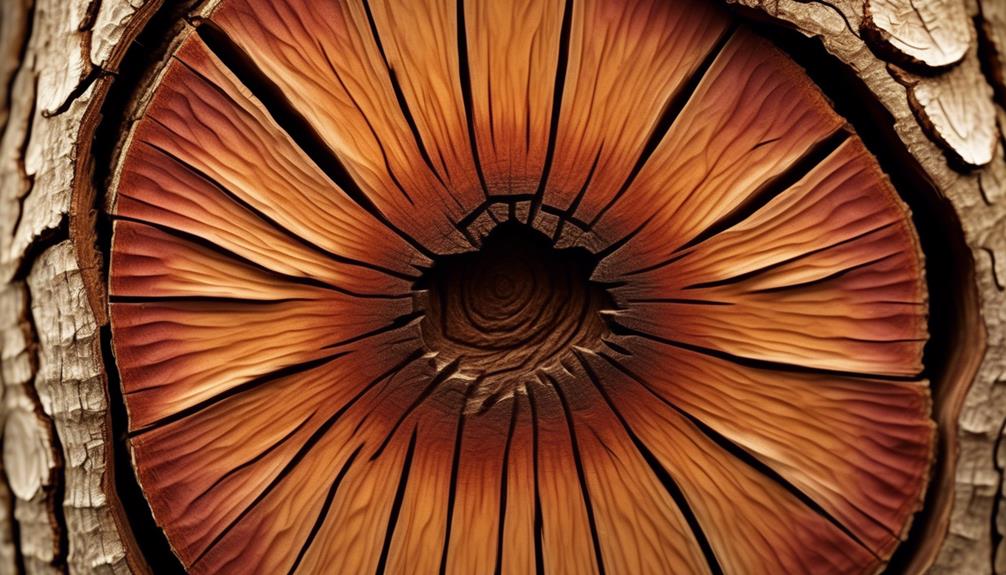Is Sweet Gum a Hardwood
As you stroll through a forest, surrounded by towering trees and the gentle rustle of leaves, you come across a tree with unique star-shaped leaves and spiky fruit hanging from its branches. Intrigued, you wonder: is Sweet Gum a hardwood?
The answer to this question lies in the properties and characteristics of this fascinating tree. From its growth and distribution to the uses of its wood and medicinal properties, exploring the nature of Sweet Gum will not only satisfy your curiosity but also shed light on the importance of this remarkable species.
So, let's dive into the world of Sweet Gum and uncover the truth about its hardwood status.
Characteristics of Sweet Gum
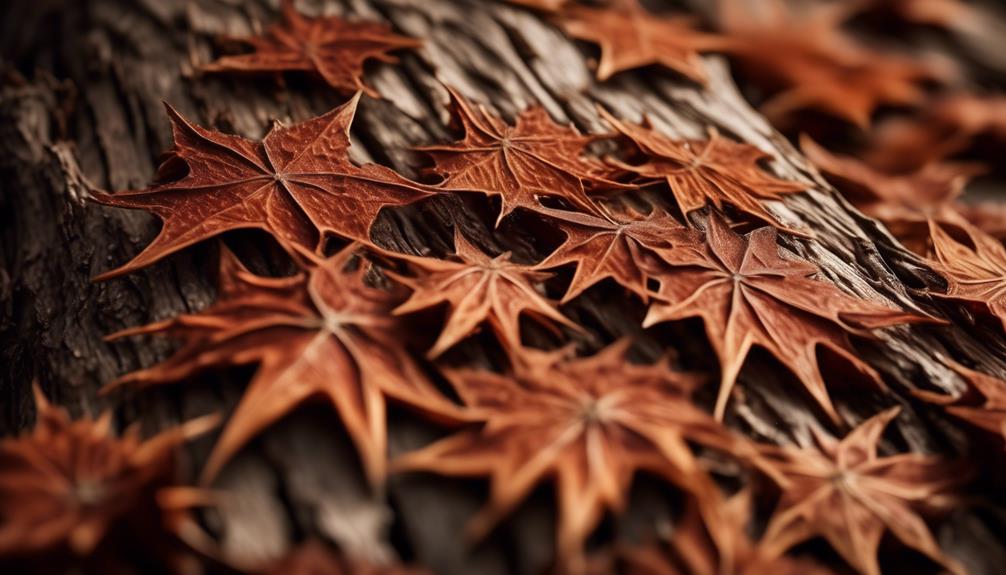
Sweet gum, a hardwood tree native to the southeastern United States, possesses a range of unique characteristics that make it a versatile and valuable material for various applications.
With a specific gravity of .46-.55 and a Janka hardness of 850 lb, sweet gum is considered a hardwood that's generally easy to work with. However, it may warp during the initial drying process.
The heartwood of sweet gum is moderately durable to non-durable, while the sapwood is perishable. Its gray to reddish-brown color, interlocked grain, and uniform texture give it a distinctive appearance.
Sweet gum is widely used for veneer, plywood, furniture, interior trim, and turned objects. It's also available at a low cost and is considered sustainable.
Therefore, sweet gum is an excellent choice for those looking for a hardwood material with various applications.
Uses of Sweet Gum
With its versatile applications and unique characteristics, sweet gum wood is highly sought after for a variety of uses.
The sweetgum tree provides wood that's ideal for furniture, interior trim, plywood, and veneer. Its strong and durable qualities make it a popular choice in the construction industry.
Interestingly, sweet gum wood is also used for making chopsticks, particularly for the East Asian market.
Additionally, the resin derived from the sweetgum tree isn't only used medicinally, but it's also utilized in the production of chewing gum.
Another fascinating use of sweet gum wood is that it can be dyed black and used as a substitute for the expensive ebony wood.
Lastly, the sweetgum tree is highly valued as an ornamental tree in landscaping and urban environments.
Sweet Gum as a Hardwood
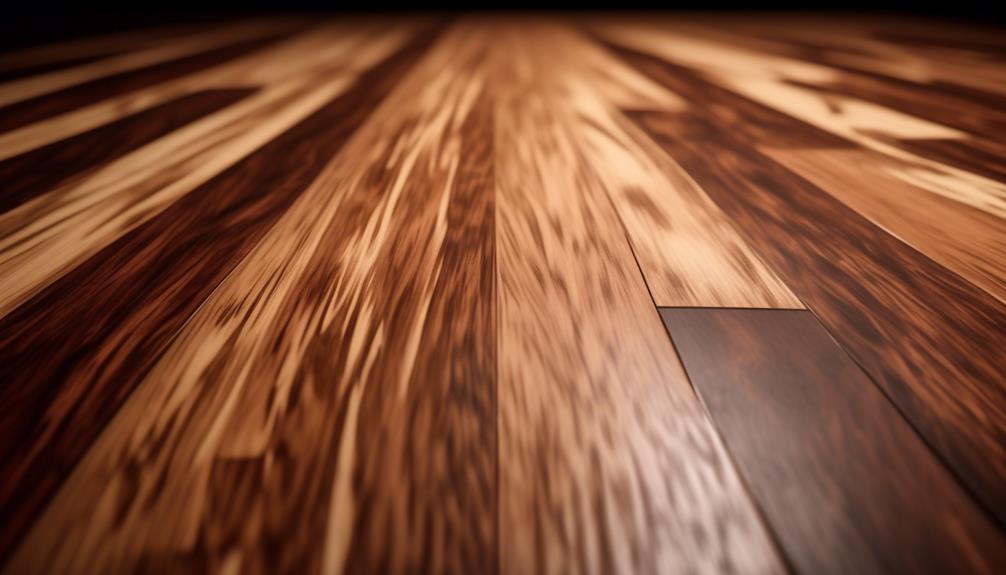
The versatility of sweet gum wood as a hardwood is evident in its wide range of applications and unique characteristics. Sweet gum, scientifically known as Liquidambar styraciflua, is a hardwood tree native to the southeastern United States.
With its moderate hardness and density, sweet gum has a Janka hardness of 850 lb (3,780 N) and an average dried weight of 34 lbs/ft (545 kg/m). The heartwood of sweet gum has a gray to reddish-brown color with interlocked grain and a fine, uniform texture. These qualities make it suitable for furniture, interior trim, veneer, plywood, and turned objects.
Sweet gum wood is also easy to work with, responding well to turning, gluing, staining, and finishing. However, it may warp and distort during initial drying. Despite this, sweet gum is widely available at a low cost, making it a popular choice for carpentry and other applications.
Growth and Distribution of Sweet Gum
A medium to large-sized deciduous tree native to North America, sweet gum, scientifically known as Liquidambar styraciflua, thrives in moist, well-drained soils and can be found in bottomland forests, swamps, and wetlands in the southeastern United States and parts of Central America.
Sweet gum is a hardwood tree that grows to heights of 65-100 ft with a trunk diameter of 2-3 ft. Its pyramidal or conical shape when young gradually becomes more rounded with age.
The growth and distribution of sweet gum are influenced by its preference for moist environments. Here are some interesting facts about the growth and distribution of sweet gum:
- Sweet gum is commonly found in bottomland forests, swamps, and wetlands.
- It's native to the southeastern United States and parts of Central America.
- The tree is well-adapted to moist, well-drained soils.
These characteristics make sweet gum a thriving and important hardwood tree in its natural habitat.
Bark and Branches of Sweet Gum
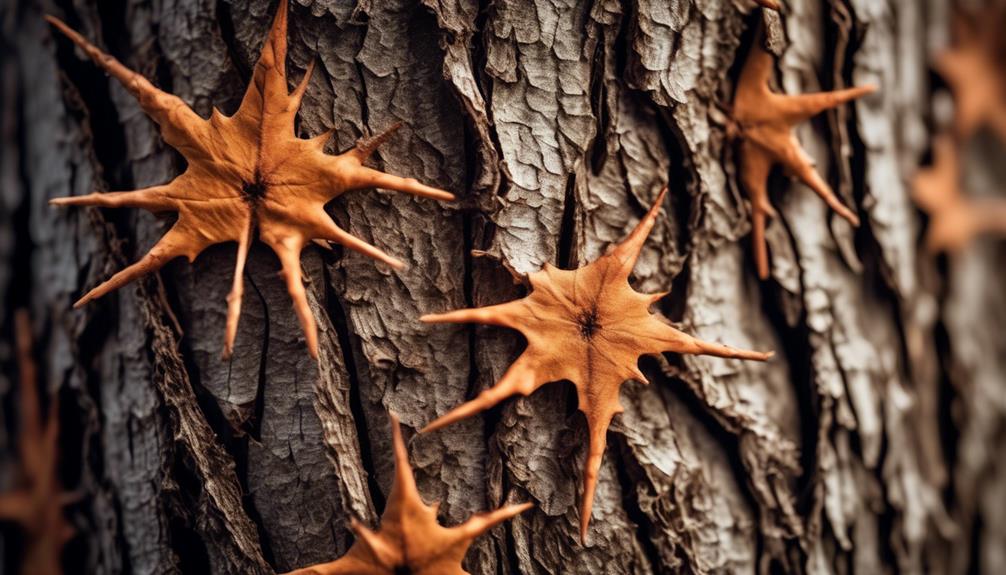
To truly appreciate the beauty and characteristics of sweet gum, you must first examine its unique bark and branches.
The bark of sweet gum is deeply furrowed and grayish-brown in color. It contains tannins, which are used for tanning leather and as a natural dye.
The branches of sweet gum are sturdy and provide a strong foundation for the tree's height and size.
The leaves of sweet gum are palmately lobed, typically with 5-7 lobes, and add to the tree's distinctive appearance.
In the fall, these leaves turn vibrant shades of red, orange, and purple, creating a stunning display of color.
Leaves and Flowers of Sweet Gum
Get ready to delve into the fascinating world of sweet gum as we explore the leaves and flowers of this remarkable hardwood tree.
- Leaves: The leaves of sweet gum are deciduous and alternate in arrangement. They're palmately lobed, resembling the shape of a star, with five to seven pointed lobes. The leaves are glossy green during the growing season and turn vibrant shades of yellow, orange, and red in the fall, creating a stunning display of autumn colors.
- Flowers: Sweet gum trees produce small, inconspicuous flowers that are arranged in dense clusters. The flowers bloom in spring and are greenish-yellow in color. Although they may not be showy, they're rich in nectar and attract a variety of pollinators, including bees and butterflies.
The leaves and flowers of sweet gum add to its aesthetic appeal and contribute to the overall ecological value of this remarkable hardwood tree.
Fruit of Sweet Gum
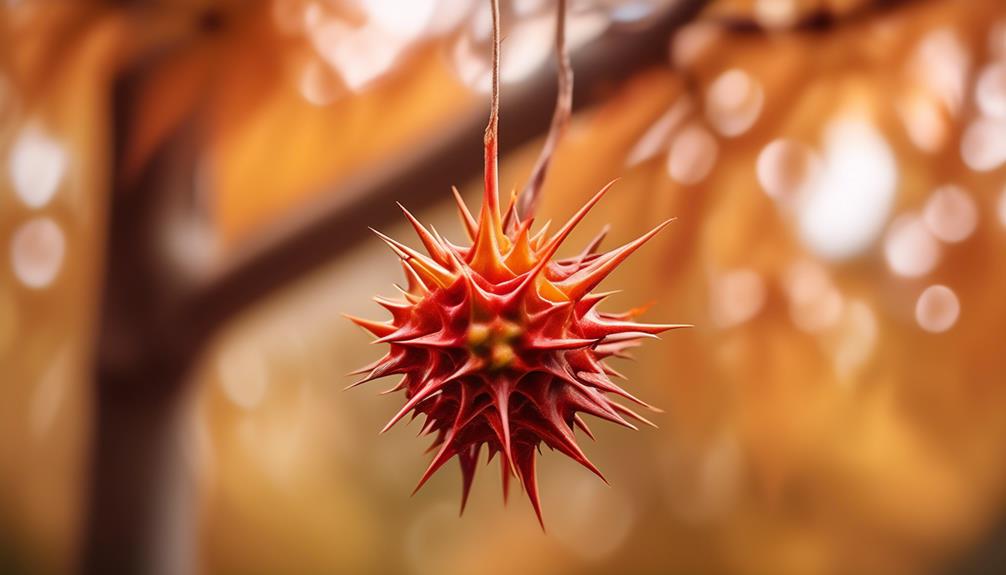
Now let's talk about the fruit of the sweet gum tree.
The fruit of sweet gum is unique and interesting in appearance, resembling small, spiky balls that are approximately one inch in diameter. These balls, also known as 'gumballs,' are green when young and turn brown as they mature.
While they may be a nuisance to some when they fall from the tree, they actually have several uses. These uses include crafts, floral arrangements, and even as a natural insect repellent.
Sweet Gum Fruit Appearance
The appearance of sweet gum fruit is characterized by its spiky, round structure, adding a unique and visually captivating element to the tree and its surroundings.
Here are a few things you should know about the sweet gum fruit appearance:
- The fruit of the sweet gum tree is often referred to as 'gumballs' or 'spiky balls' due to its prickly exterior.
- Inside these spiny spherical balls, you'll find tiny winged seeds, which are dispersed by the wind.
- The distinctive appearance of sweet gum fruit makes it a popular choice for decorative purposes in crafts and floral arrangements.
Whether you stumble upon them on the ground or catch sight of them still clinging to the tree, the spiky, round fruit of the sweet gum tree is hard to miss. Its unique appearance adds a touch of intrigue and beauty to the tree and its surroundings, making it a fascinating feature of this remarkable hardwood tree.
Uses of Sweet Gum Fruit
Sweet gum fruit, also known as the fruit of sweet gum, serves a variety of practical and medicinal purposes, making it a valuable resource with numerous applications.
In the carpentry industry, sweet gum is commonly used for furniture, interior trim, and woodenware. The tree's resin isn't only used medicinally and for making chewing gum, but the wood itself is also used for plywood, veneer, and crates. Sweet gum wood is highly valued for its reddish-brown color and heavy texture, and it can even be dyed black to serve as a substitute for ebony.
Additionally, sweet gum fruit is used in Chinese medicine to treat diarrhea, coughs, and skin sores. It possesses remarkable anti-inflammatory, antioxidant, and antimicrobial properties.
The tree is also a popular choice in landscaping and urban environments due to its vibrant fall foliage and unique fruit structures.
The sweet gum fruit truly offers a wide range of practical and medicinal uses.
Sweet Gum Wood: Properties and Applications
Now let's explore the properties and applications of Sweet Gum wood.
Sweet Gum, a hardwood commonly found in the southeastern United States, offers a range of uses due to its moderate durability, fine texture, and interlocked grain.
It's often used for veneer, plywood, furniture, interior trim, and turned objects.
With its moderate workability and ability to finish well, Sweet Gum wood is a versatile and affordable option for various projects.
Sweet Gum Hardwood Uses
With its moderate durability and reddish-brown hue, sweet gum hardwood offers a wide range of versatile applications in furniture, interior trim, plywood, veneer, and more. Here are some of the ways you can make use of this hardwood:
- Furniture: Sweet gum hardwood can be crafted into beautiful and sturdy furniture pieces. Its reddish-brown color adds warmth and character to any room.
- Interior Trim: Use sweet gum hardwood for baseboards, window casings, and crown moldings to give your home an elegant and polished look.
- Plywood and Veneer: Sweet gum can be sliced into thin sheets to create plywood and veneer, which are commonly used in cabinetry and paneling.
Whether you're looking to furnish your home or add a touch of sophistication to your interior design, sweet gum hardwood is a reliable and attractive choice. Its versatility and availability make it a popular option in various industries.
Sweet Gum Wood Characteristics
If you're curious about the properties and applications of sweet gum wood, you'll be intrigued by its distinct appearance and versatile uses.
Sweet gum, classified as a hardwood, has a medium to large-sized tree that's commonly found in the southeastern United States.
The wood of sweet gum is known for its unique characteristics. It has a specific gravity of .46 to .55 and a Janka hardness of 850 lb, making it suitable for various applications such as veneer, plywood, furniture, and turned objects.
Sweet gum wood has a wide sapwood ranging from whitish to light pink or tan, while the heartwood is gray to reddish brown, often with black streaks. Its quartersawn pieces exhibit a beautiful ribbon-stripe appearance.
Although sweet gum wood may warp and distort during drying, it's generally easy to work with and responds well to turning, gluing, staining, and finishing. Additionally, it has moderate resistance to steam bending.
Beyond its uses, sweet gum trees play a vital ecological role, providing habitat and food for wildlife, supporting diverse insect species, and contributing to soil stabilization and erosion prevention.
Applications of Sweet Gum
Sweet gum wood, with its distinct reddish-brown color and heavy characteristics, finds a wide range of applications in furniture, interior trim, flooring, plywood, veneer, crates, and even in the East Asian market for making chopsticks. Here are some of the ways sweet gum wood is used:
- Furniture: Sweet gum wood is often used to make durable and attractive furniture pieces due to its beautiful color and strength.
- Interior trim: The wood is used for moldings, baseboards, and other decorative elements that add a touch of elegance to homes and buildings.
- Flooring: Sweet gum wood flooring is highly sought after for its durability and unique aesthetics.
In addition to these uses, sweet gum wood can be dyed black to serve as a substitute for ebony. It's also utilized in Chinese medicine for various medicinal purposes. The tree's resin is used medicinally and for making chewing gum. Sweet gum wood possesses anti-inflammatory, antioxidant, and antimicrobial properties, making it highly versatile and valuable in various industries.
Resin and Medicinal Uses of Sweet Gum
The resin extracted from the sweet gum tree has long been revered for its impressive medicinal properties. This resin, also known as liquid amber, has been used in traditional medicine for centuries to treat various ailments. The sweet gum resin possesses several beneficial properties, including anti-inflammatory, antioxidant, and antimicrobial effects. These properties make it valuable in natural medicine and have led to its use in treating diarrhea, coughs, and skin sores.
In Chinese medicine, the resin is highly regarded for its therapeutic benefits and is used as a natural remedy for various health conditions. Additionally, sweet gum resin can be harvested and used for making chewing gum, showcasing its versatility in both traditional and commercial applications.
The resin and its medicinal uses haven't only contributed to the economic significance of the sweet gum tree but also highlight its ecological importance.
Cultivation and Maintenance of Sweet Gum

Now that you've learned about the uses and benefits of sweet gum, let's dive into the cultivation and maintenance of this versatile tree.
When it comes to planting and pruning, it's important to choose a well-drained soil and provide enough space for the tree to grow to its full potential.
Sweet gum thrives in moist conditions, so regular watering is essential.
Additionally, keep an eye out for common pests and diseases that can affect the tree's health and take appropriate measures for effective control.
Planting and Pruning
For successful cultivation and maintenance of sweet gum trees, it's essential to prioritize well-drained soil, regular watering, proper fertilization, and protection from pests and diseases. Here are some tips to help you with planting and pruning your sweet gum tree:
- Choose the right location: Select a spot with full sun or partial shade and well-drained soil to ensure optimal growth.
- Planting: Dig a hole that's wide and deep enough to accommodate the root ball of the tree. Place the tree in the hole, backfill with soil, and water thoroughly.
- Pruning: Prune your sweet gum tree during the dormant season to remove dead or diseased branches, improve air circulation, and shape the tree.
Soil and Watering
To ensure the successful cultivation and maintenance of your sweet gum tree, it's crucial to understand the importance of soil quality and proper watering techniques.
Sweet gum trees thrive in moist, well-drained soils and can adapt to a variety of soil types, including clay and sandy soils. Ensuring that your tree has well-drained soil will prevent waterlogging, which can lead to root rot and other diseases.
Regular watering is essential, especially during dry periods, to keep the soil consistently moist. However, be careful not to overwater, as this can also harm the tree. A good rule of thumb is to water deeply, allowing the water to penetrate the soil to a depth of at least 6 inches.
Pest Control and Disease
Monitoring and treating pests and diseases is crucial for the cultivation and maintenance of sweet gum trees, ensuring their health and vitality. Here are some important points to consider for effective pest control and disease management:
- Regularly inspect your sweet gum trees for signs of pest infestation such as scale insects, caterpillars, and borers. Prompt action can prevent further damage.
- Common diseases like anthracnose, canker, and powdery mildew can affect sweet gum trees. Implement preventive measures such as proper maintenance and regular pruning to minimize the risk of these diseases.
- Proper irrigation and soil management are essential for reducing the risk of root rot and other moisture-related diseases. Ensure proper drainage and avoid overwatering.
Conclusion
In conclusion, Sweet Gum is a valuable hardwood tree found in the southeastern United States. Its wood is highly sought after for carpentry purposes and its resin has medicinal properties.
This tree provides important habitat and food for wildlife and its vibrant fall foliage adds beauty to our surroundings.
Overall, Sweet Gum is a versatile and beneficial species that contributes to various industries and ecosystems.

